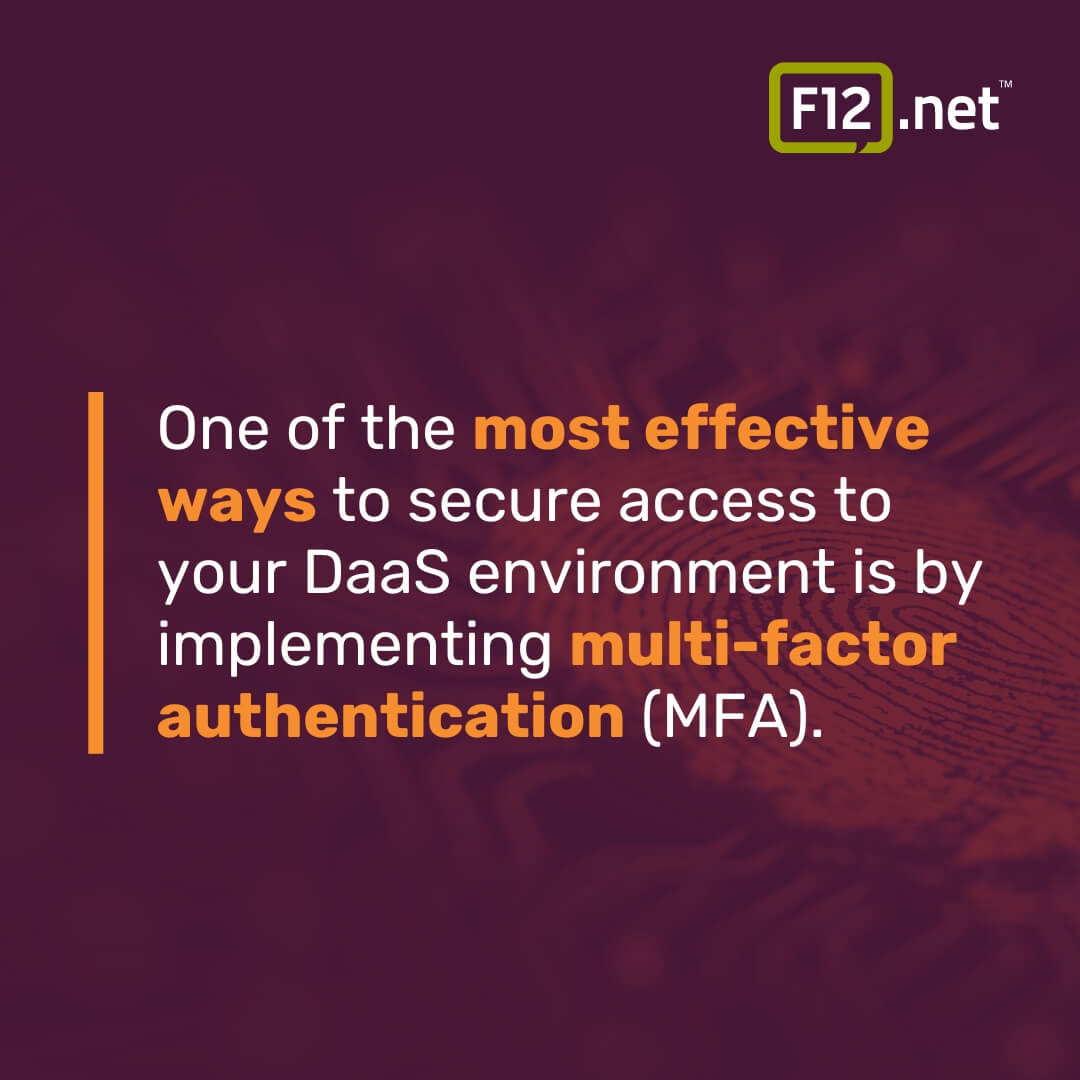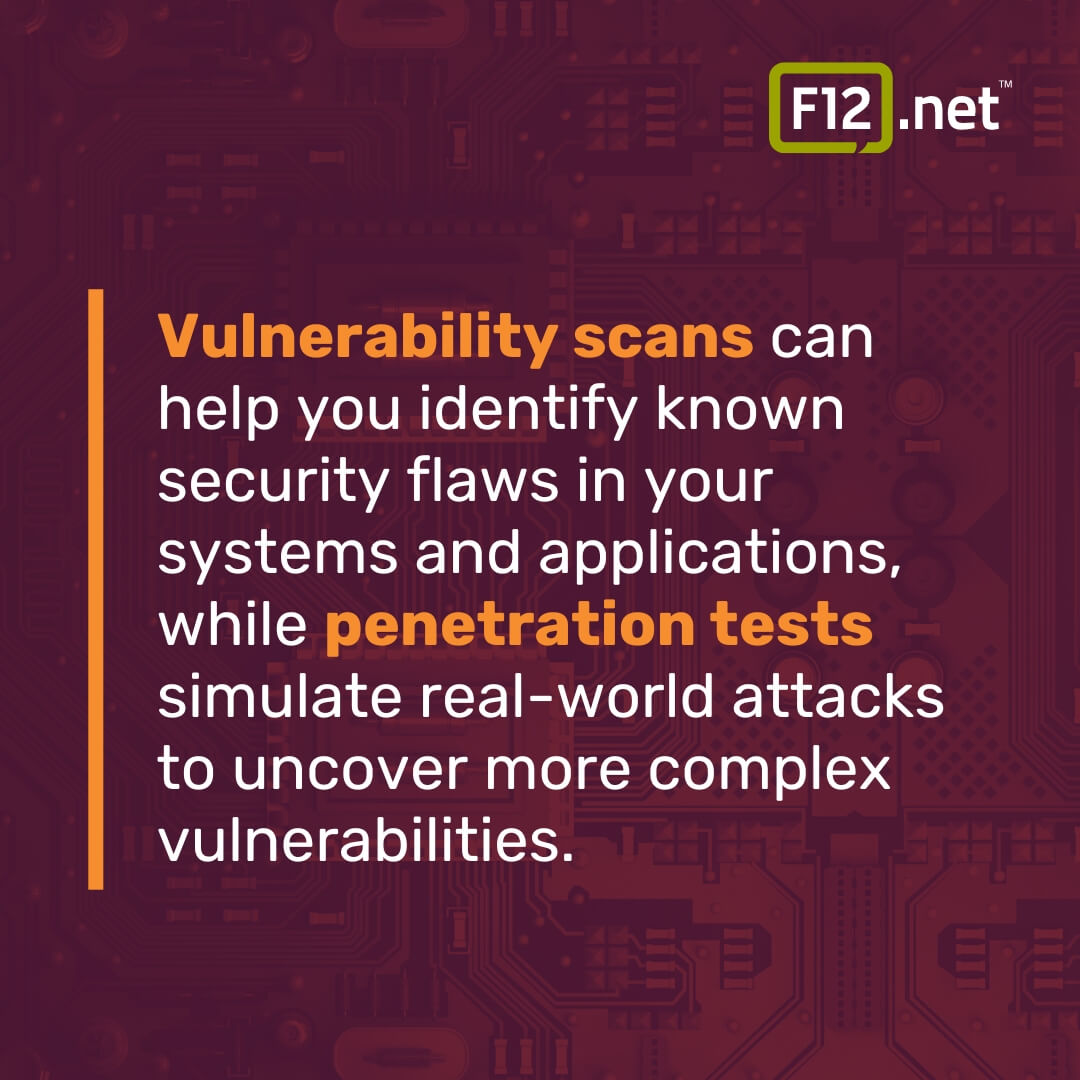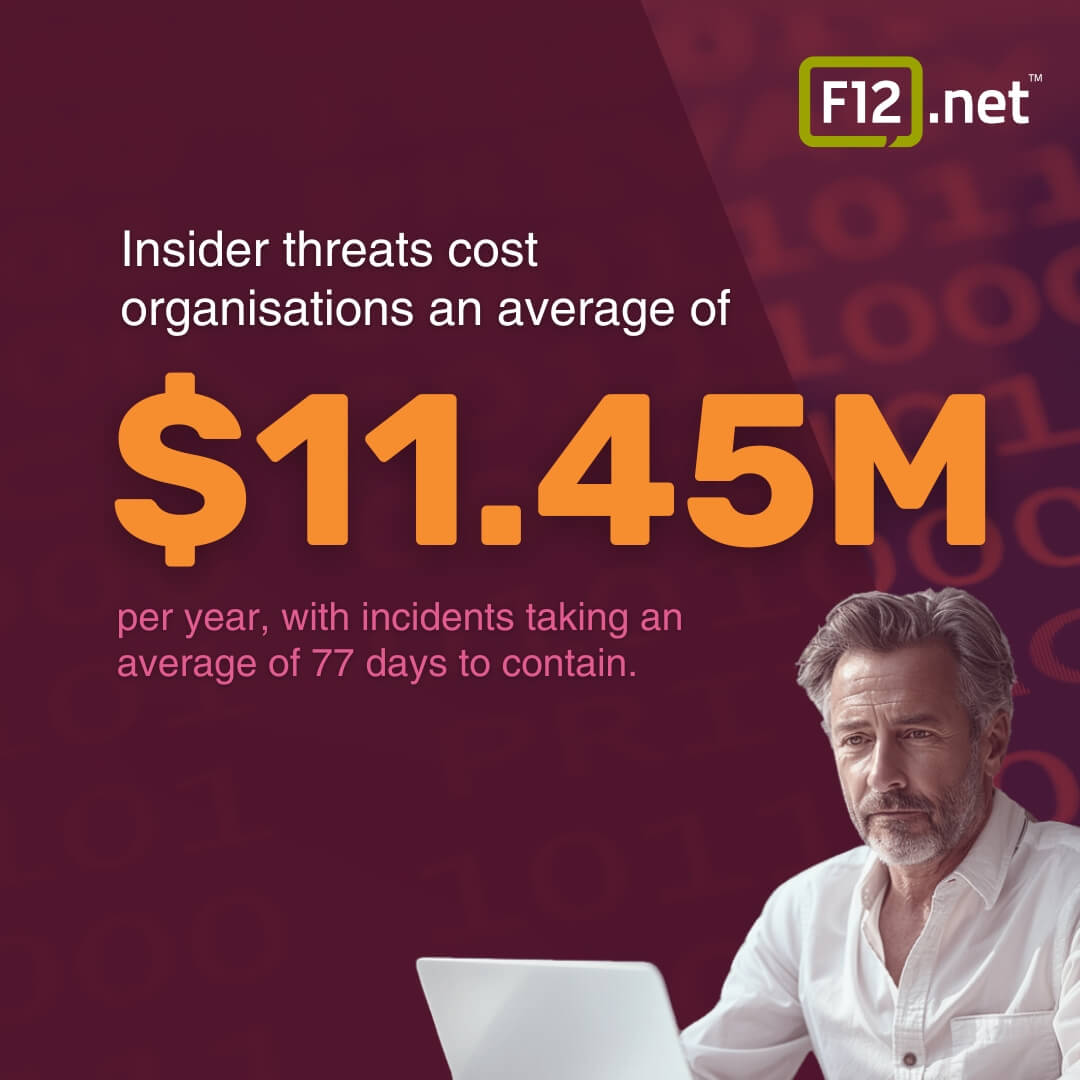Brief: From implementing powerful access controls and encryption to using AI-powered threat detection, this guide equips executives with essential knowledge and strategies for DaaS Provider Security. Explore the proactive measures necessary to protect your valuable data and ensure compliance with industry regulations.
”[Installing a new security system] Given all the attacks lately, I thought we might need an upgrade.” – Reed Richards: Fantastic Four: World’s Greatest Heroes (2006)
Just as Reed Richards recognises the need for stronger security in response to increasing threats, businesses today must also adapt to the changing cyber environment.
And understanding your DaaS Provider Security posture is no different.
With cyber threats becoming increasingly sophisticated, it’s essential to stay ahead and implement effective security measures to protect your organisation’s data and assets.
Consider companies like Google, which have successfully implemented a Zero Trust security model, verifying every access attempt regardless of origin.
This proactive approach has been key to maintaining their security.
Dropbox, for instance, uses advanced encryption for data both at rest and in transit, making intercepted data unreadable and securing sensitive information.
Ignoring these guidelines can lead to severe consequences, including data breaches, legal issues, and a loss of customer trust.
The 2017 Equifax breach, which exposed the personal information of 147 million people, was due to a missed security patch—a simple yet crucial step in maintaining a secure system.
Conversely, organisations that prioritise security protect their data and build a resilient foundation for future growth, maintaining trust and confidence in their services.
As we look ahead, the key to effective DaaS Provider Security lies in adopting a proactive, multi-layered approach that addresses potential vulnerabilities and ensures compliance with industry regulations.
From implementing strong access controls and encryption to using AI-powered threat detection, this comprehensive guide will equip you with the knowledge and strategies needed to strengthen your DaaS environment and protect your valuable data.
DaaS Provider Security Best Practices: Safeguarding Your Data in the Cloud
- Implement multi-layered security measures to protect your data in DaaS environments
- Establish strong access control policies and regularly assess your security
- Encrypt sensitive data and educate employees on security best practices
DaaS (Desktop-as-a-Service) has become increasingly popular as organisations adopt cloud-based solutions to support remote work and flexible access to critical applications.
However, with the convenience of DaaS comes the responsibility of ensuring the security of your data in the cloud.
Implement Multi-Factor Authentication (MFA)
One of the most effective ways to secure access to your DaaS environment is by implementing multi-factor authentication (MFA). MFA requires users to provide two or more forms of identification to access DaaS resources, such as a password and a security token or biometric data.

This additional layer of security makes it significantly harder for unauthorised individuals to gain access to your systems, even if they manage to compromise a user’s password.
To ensure the continued effectiveness of MFA, it’s essential to regularly review and update your MFA policies. This includes assessing the types of authentication factors used, the frequency of authentication prompts, and the processes for managing lost or stolen authentication devices.
For example, Citrix DaaS supports multi factor authentication using various methods, including AD, RADIUS, certificates, and multiple third-party IdPs using SAML 2.0, OAuth, and OIDC.
Establish Access Control Policies
In addition to MFA, implementing strong access control policies is crucial for safeguarding your data in DaaS environments. Role-based access control (RBAC) is a widely-used approach that limits user permissions based on their job functions.
By granting users only the access they need to perform their duties, you can minimise the risk of data breaches caused by insider threats or compromised accounts.
Regularly reviewing and updating user access privileges is essential to maintaining the principle of least privilege. As employees’ roles and responsibilities change, their access rights should be adjusted accordingly.
Additionally, monitoring and auditing user activity can help you detect and respond to suspicious behaviour, such as unauthorised access attempts or unusual data transfers.
Citrix policies can be configured to control user access and session environments, ensuring that access is granted based on specific criteria.
Conduct Regular Security Assessments and Penetration Testing
To identify and address potential security weaknesses in your DaaS environment, it’s crucial to conduct regular security assessments and penetration testing.
Vulnerability scans can help you identify known security flaws in your systems and applications, while penetration tests simulate real-world attacks to uncover more complex vulnerabilities.

Engaging third-party security experts to perform these assessments can provide an objective evaluation of your DaaS Provider Security.
These professionals have the expertise and tools to thoroughly test your defences and identify areas for improvement. Based on the findings of these assessments, develop and implement a remediation plan to address any identified vulnerabilities and strengthen your overall security.
Citrix provides a Secure Deployment Guide for the Citrix Cloud Platform, which includes security best practices and information on the division of responsibility between Citrix and customers.
Encrypt Sensitive Data
Encrypting sensitive data is a fundamental best practice for protecting your information in DaaS environments.
By encrypting data both at rest and in transit, you can ensure that even if unauthorised individuals gain access to your data, they won’t be able to read or use it without the appropriate encryption keys.
When selecting encryption solutions for your DaaS environment, consider the level of security provided, the ease of management, and the potential impact on system performance.
Additionally, establish secure key management practices to protect encryption keys from unauthorised access or loss. Citrix DaaS supports the enforcement of HTTPS or HTTP traffic through the XML Service, ensuring secure communication between components.
Educate Employees on Security Best Practices
Your employees play a critical role in maintaining the security of your DaaS environment. Educating them on security best practices can help reduce the risk of human error and social engineering attacks.
Conduct regular security awareness training sessions to cover topics such as strong password practices, identifying and reporting phishing attempts, and handling sensitive data responsibly.
What is DaaS security?
DaaS security refers to the measures and practices implemented to protect data and resources in a Desktop-as-a-Service environment.
It encompasses a range of strategies, including access control, data encryption, vulnerability management, and employee education, to safeguard against unauthorised access, data breaches, and other security threats.
By implementing these DaaS security best practices, you can significantly improve the protection of your data in the cloud. However, it’s important to remember that security is an ongoing process that requires continuous monitoring, assessment, and adaptation to stay ahead of threats.
DaaS Provider Security and Data Protection: Ensuring the Confidentiality and Integrity of Your Information
- Strong encryption, backup, and recovery procedures safeguard DaaS data
- Access controls and monitoring detect and prevent unauthorised access
- Compliance with industry regulations ensures data protection and privacy
DaaS (Desktop as a Service) providers offer virtual desktops and applications hosted in the cloud, enabling users to access their work environment from anywhere with an internet connection.
While DaaS offers flexibility and scalability, it’s crucial to ensure the security and integrity of the data stored and processed within these environments.
Implement Data Encryption at Rest and in Transit
Data encryption is a fundamental aspect of DaaS security. Encrypting data at rest, when it’s stored on servers or storage devices, protects it from unauthorised access in the event of a breach.
DaaS providers should use industry-standard encryption algorithms, such as AES (Advanced Encryption Standard) with 256-bit keys, to encrypt data at rest. Encrypting data in transit is equally important to prevent interception and tampering as it moves between the DaaS environment and end-user devices.
Secure protocols like Transport Layer Security (TLS) and Secure Sockets Layer (SSL) should be used to encrypt data in transit. These protocols establish an encrypted tunnel between the client and server, ensuring that data remains confidential and unaltered during transmission.
Encryption Key Management
Effective encryption key management is essential for maintaining the security of encrypted data. DaaS providers should follow best practices for key management, including:
- Storing encryption keys separately from the encrypted data
- Regularly rotating encryption keys to minimise the impact of a potential key compromise
- Implementing strict access controls and monitoring for encryption key access
- Using hardware security modules (HSMs) for secure key storage and management.
Establish Data Backup and Recovery Procedures
Regular data backups are crucial for ensuring the availability and recoverability of data in the event of a disaster, system failure, or data corruption. DaaS providers should implement a strong backup strategy that includes:
- Automated, scheduled backups of critical data
- Storing backups in geographically dispersed locations to minimise the risk of data loss due to localised disasters
- Testing backup and recovery processes regularly to verify their effectiveness and identify areas for improvement.
Disaster Recovery Planning
In addition to regular backups, DaaS providers should have a comprehensive disaster recovery plan in place. This plan should outline the steps to be taken in the event of a major disruption, such as a natural disaster or cyberattack, to ensure the timely restoration of services and data.
Key components of a disaster recovery plan include:
- Defining recovery time objectives (RTO) and recovery point objectives (RPO) based on business requirements
- Establishing a secondary DaaS environment for failover in the event of a primary site failure
- Regularly testing the disaster recovery plan to ensure its effectiveness and identify areas for improvement.
Implement Strong Access Controls and Monitoring
Controlling access to DaaS environments and monitoring user activity are essential for preventing unauthorised access and detecting potential security threats.
DaaS providers should implement the following access control and monitoring measures:
- Multi-factor authentication (MFA) for user logins to prevent unauthorised access via stolen credentials
- Role-based access control (RBAC) to ensure users have access only to the resources and data necessary for their job functions
- Logging and monitoring of user activity, including login attempts, resource access, and data modifications
- Real-time alerts and automated responses to detect and respond to potential security incidents.
Privileged Access Management
Special attention should be given to managing privileged access to DaaS environments, as these accounts have the potential to cause significant damage if compromised.
DaaS providers should:
- Limit the number of privileged accounts and restrict their access to only the necessary resources
- Implement just-in-time (JIT) access, granting privileged access only when needed and revoking it immediately after use.
- Monitor and log all privileged account activity for auditing and incident response purposes.
Ensure Compliance with Industry Regulations
DaaS providers must comply with various industry regulations and standards to ensure the protection and privacy of sensitive data.
Some key regulations and standards include:
- HIPAA (Health Insurance Portability and Accountability Act) for protected health information (PHI)
- PCI DSS (Payment Card Industry Data Security Standard) for credit card data
- GDPR (General Data Protection Regulation) for personal data of EU citizens
- SOC 2 (Service organisation Control 2) for assessing the security, availability, and confidentiality of service providers
DaaS providers should have a clear understanding of the regulatory requirements applicable to their customers’ industries and implement the necessary controls and processes to ensure compliance.
This may include:
- Conducting regular risk assessments and audits to identify and address compliance gaps
- Providing customers with documentation and evidence of compliance, such as audit reports and certifications
- Offering customisable security controls and settings to meet specific compliance requirements.
By implementing strong data protection measures, including encryption, backup and recovery procedures, access controls, and compliance with industry regulations, DaaS providers can ensure the confidentiality, integrity, and availability of their customers’ data.
As organisations increasingly rely on DaaS for their remote work needs, it’s crucial to choose a provider that prioritises security and has a proven track record of protecting customer data.
DaaS Provider Security Compliance Requirements: Understanding the Regulatory World
- Stay compliant with industry regulations like HIPAA, PCI-DSS, and GDPR
- Conduct regular compliance audits and assessments to identify gaps
- Train employees on compliance policies and procedures to ensure adherence
Understand and Adhere to Relevant Industry Regulations
Depending on your industry, there are various regulatory requirements you must comply with when using Desktop as a Service (DaaS) solutions. DaaS stands for “Desktop as a Service,” a cloud computing offering where a service provider delivers virtual desktops to end users over the internet.
Some common regulations include HIPAA for healthcare, PCI-DSS for organisations handling credit card data, and GDPR for companies dealing with EU citizens’ personal data.
To ensure compliance, identify the specific regulations applicable to your industry and assess your DaaS provider’s compliance with these standards. Request documentation and support from your provider to demonstrate their adherence to the required regulations.
Conduct Regular Compliance Audits and Assessments
To maintain strong compliance, it’s essential to conduct regular audits and assessments. Perform internal audits to evaluate your organisation’s compliance with relevant regulations and standards. These audits help identify potential gaps or areas for improvement in your compliance practices.
Consider engaging third-party auditors to provide an independent assessment of your compliance. External auditors bring a fresh perspective and can help uncover compliance issues that may have been overlooked internally. Based on the findings from internal and external audits, develop and implement corrective action plans to address any identified compliance gaps.
Train Employees on Compliance Policies and Procedures
Employee training is a critical component of maintaining compliance when using DaaS solutions. Develop comprehensive training programs to educate employees on the relevant compliance policies and procedures they must follow.
This training should cover topics such as data handling, access control, and incident reporting.
Regular training sessions help reinforce compliance best practices and ensure that employees are aware of their responsibilities in maintaining a compliant environment.
Consider implementing ongoing training initiatives, such as annual refresher courses or periodic updates, to keep employees informed about changes in regulations or company policies.
Collabourate with Your DaaS Provider on Compliance Efforts
Maintaining compliance is a shared responsibility between your organisation and your DaaS provider. Establish open lines of communication with your provider to collaborate on compliance efforts. Request regular compliance reports and discuss any potential concerns or areas for improvement.
Work with your DaaS provider to develop a compliance roadmap that outlines the steps both parties will take to ensure ongoing adherence to regulatory requirements.
This collaboration helps align your compliance efforts and ensures that both your organisation and your provider are working towards the same compliance goals.
Stay Informed about Evolving Compliance
With new regulations being introduced and existing ones being updated. To stay ahead of compliance requirements, make it a priority to stay informed about changes in the regulatory environment.
Assign dedicated personnel or teams to monitor regulatory developments and assess their impact on your organisation’s DaaS usage. Attend industry conferences, webinars, and training sessions to gain insights into emerging compliance trends and best practices.
Regularly review and update your compliance policies and procedures to align with the latest regulatory requirements. Communicate these updates to employees and provide necessary training to ensure organisation-wide adherence to the revised policies.
By staying proactive and informed about evolving compliance regulations, you can ensure that your organisation remains compliant while usinging the benefits of DaaS solutions.
DaaS Encryption and Access Control: Protecting Your Data from Unauthorised Access
- Implementing powerful encryption and access control measures is crucial for safeguarding sensitive data in a DaaS environment
- Understand the key differences between VPNs, virtual machines, and DaaS to make informed security decisions
- Explore best practices for password policies, two-factor authentication, and data encryption to strengthen your DaaS security.
Implement Strong Password Policies and Two-Factor Authentication
Implementing strong password policies and two-factor authentication (2FA) is a fundamental step in protecting your data from unauthorised access. Weak passwords are often the primary entry point for cybercriminals, making it essential to enforce strict password requirements across your organisation.
Start by requiring users to create complex passwords that include a combination of uppercase and lowercase letters, numbers, and special characters.
Establish a minimum password length of at least 12 characters to make them more difficult to crack. Additionally, mandate regular password updates every 60 to 90 days to minimise the risk of compromised credentials being exploited for extended periods.
To improve security, implement two-factor authentication as an additional layer of protection beyond passwords. 2FA requires users to provide a second form of identification, such as a one-time code sent to their mobile device or a biometric factor like a fingerprint or facial recognition.
By combining something the user knows (password) with something they have (mobile device) or something they are (biometric), 2FA significantly reduces the chances of unauthorised access, even if a password is compromised.
Educating Users on Password Hygiene
Educating users on the importance of strong password hygiene is equally crucial. Conduct regular security awareness training sessions to emphasise the risks associated with weak passwords, password reuse, and sharing credentials.
Encourage users to use password managers to generate and securely store unique, complex passwords for each account.
Utilise Encryption for Data at Rest and in Transit
Encryption is a critical component of DaaS security, ensuring that data remains protected even if it falls into the wrong hands. Implement industry-standard encryption algorithms, such as AES-256, to encrypt data stored in the DaaS environment.
This includes encrypting virtual machine disks, snapshots, and any sensitive data stored in the cloud.
When data is transmitted between the DaaS platform and end-user devices, it is crucial to use secure protocols like Transport Layer Security (TLS) or Secure Sockets Layer (SSL). These protocols encrypt data in transit, preventing interception and tampering by malicious actors.
Ensure that your DaaS provider supports and enforces the use of the latest TLS/SSL versions to maintain the highest level of security.
Regularly Review and Update Encryption Policies
As encryption standards evolve and new threats emerge, it is essential to regularly review and update your encryption policies and practices. Stay informed about the latest developments in encryption technologies and industry best practices.
Conduct periodic audits to ensure that encryption is properly implemented and configured across your DaaS environment.
Implement Role-Based Access Control (RBAC)
Role-Based Access Control (RBAC) is a security model that grants access to resources based on a user’s role within the organisation. By implementing RBAC in your DaaS environment, you can ensure that users only have access to the data and applications necessary for their job functions.
Start by defining clear roles and permissions for each user group, such as administrators, power users, and standard users. Assign access rights based on the principle of least privilege, granting users the minimum permissions required to perform their tasks.
Regularly review and update user roles and permissions to maintain a tight security environment.
Monitoring and Auditing Access
In addition to implementing RBAC, it is crucial to monitor and audit user access to detect and respond to potential security incidents. Enable logging and monitoring capabilities within your DaaS platform to track user activities, including login attempts, resource access, and configuration changes.
Regularly review access logs to identify unusual patterns or suspicious activities, such as multiple failed login attempts or access from unfamiliar locations. Implement automated alerts and notifications to promptly detect and respond to potential security breaches.
Understand the Differences: VPN, Virtual Machines, and DaaS
When discussing DaaS Provider Security, it is important to understand the differences between Virtual Private Networks (VPNs), virtual machines (VMs), and Desktop-as-a-Service (DaaS). While these technologies may seem similar, they serve distinct purposes and have different security implications.
A VPN creates a secure, encrypted tunnel between a user’s device and a remote network, allowing them to access resources as if they were directly connected to the network. VPNs are primarily used for remote access and securing data in transit, but they do not provide a complete desktop environment.
Virtual machines, on the other hand, are software emulations of physical computers that run on a host machine. VMs allow multiple operating systems to run independently on a single physical server, enabling better resource utilisation and isolation.
However, VMs are typically managed by the organisation itself and require significant IT resources to deploy and maintain.
DaaS, in contrast, is a cloud-based service that delivers virtual desktops to users over the internet. DaaS providers manage the underlying infrastructure, including servers, storage, and networking, while users can access their virtual desktops from any device with an internet connection.
DaaS offers the benefits of VMs, such as isolation and flexibility, but with the added advantages of scalability, cost-efficiency, and simplified management.
Use Multi-Factor Authentication for Privileged Access
While two-factor authentication provides an additional layer of security for standard users, it is essential to implement even stronger authentication measures for privileged accounts, such as administrators and superusers.
These accounts have elevated permissions and access to sensitive resources, making them prime targets for cybercriminals.
Implement multi-factor authentication (MFA) for privileged access, requiring users to provide three or more forms of identification. In addition to passwords and mobile device codes, consider using hardware security tokens or biometric factors like fingerprints or facial recognition.
By enforcing MFA for privileged accounts, you significantly reduce the risk of unauthorised access and minimise the potential impact of compromised credentials.
Implementing Just-in-Time (JIT) Privileged Access
To further strengthen the security of privileged accounts, consider implementing Just-in-Time (JIT) privileged access. JIT access grants elevated permissions to users only when necessary and for a limited duration.
This approach reduces the window of opportunity for attackers to exploit privileged accounts and minimises the risk of insider threats.
With JIT access, users request elevated permissions when needed, and access is granted after proper approval and authentication.
Once the task is completed or the specified time period expires, the elevated permissions are automatically revoked, ensuring that privileged access is only available when strictly necessary.
By combining strong encryption, access control measures, and a deep understanding of the differences between VPNs, VMs, and DaaS, organisations can effectively protect their data from unauthorised access in a DaaS environment.
Regular security audits, employee training, and staying up-to-date with the latest security best practices are essential to maintaining a strong security presence.
The Evolution of DaaS Security in 2023: Adapting to Emerging Threats
- DaaS providers have made significant strides in improving security measures throughout 2023
- Zero trust security models and automation have been key focus areas for DaaS security improvements
- Continuous monitoring and optimisation remain crucial for staying ahead of threats
Increased Adoption of Zero Trust Security Models
In 2023, DaaS providers have increasingly adopted zero trust security models to address the growing complexity of securing remote work environments. Zero trust operates on the principle of “never trust, always verify,” ensuring that no user, device, or network is granted implicit trust.
Throughout the year, DaaS providers have been implementing identity and access management (IAM) solutions to continuously verify and validate user identities before granting access to sensitive resources.
Multi-factor authentication (MFA) has become a standard requirement, adding an extra layer of security beyond traditional username and password combinations.
Continuous Monitoring and Auditing
DaaS providers have also focused on improving their monitoring and auditing capabilities to detect and respond to potential security incidents promptly.
By using advanced analytics and machine learning algorithms, providers can identify unusual user behaviour patterns and flag suspicious activities for further investigation.
Growing Emphasis on Security Automation and Orchestration
Providers have recognised the importance of automating security processes to keep pace with emerging threats. In 2023, there has been a growing emphasis on using security automation tools to streamline threat detection, incident response, and remediation processes.
DaaS providers have been integrating security orchestration platforms to enable rapid and coordinated responses to security incidents. These platforms allow for the automation of repetitive tasks, freeing up security teams to focus on more strategic initiatives.
Continuous Optimisation of Security Processes
Throughout the year, DaaS providers have continuously monitored and optimised their security automation and orchestration processes to ensure their effectiveness.
Regular security audits and penetration testing have become essential practices to identify and address potential vulnerabilities proactively.
Looking ahead, the next 12 months are expected to bring further advancements in DaaS security. Providers will continue to prioritise the adoption of zero trust security models, with a focus on improving identity and access management capabilities. The integration of artificial intelligence and machine learning technologies will enable more proactive threat detection and response.
DaaS providers will need to remain vigilant and adapt their security strategies accordingly. Collaboration with industry partners and staying informed about the latest security best practices will be crucial for staying ahead of potential threats.
To capitalise on these trends, organisations using DaaS solutions should:
- Prioritise providers that have adopted zero trust security models and have powerful identity and access management capabilities.
- Ensure that their DaaS provider has implemented security automation and orchestration tools to enable rapid incident response.
- Regularly review and assess their DaaS provider’s security measures, including compliance with relevant industry standards and regulations.
By staying informed about DaaS security and partnering with providers that prioritise security, organisations can confidently embrace the benefits of DaaS while mitigating potential risks.
Looking Ahead: DaaS Security Predictions and Recommendations for 2024
- As DaaS adoption continues to grow, organisations must prioritise security measures to protect their virtual desktop environments
- Insider threats and advanced persistent threats (APTs) will remain significant concerns for DaaS providers and users in 2024
- The integration of AI and machine learning technologies will play a crucial role in improving DaaS security capabilities
Increased Focus on Insider Threat Detection and Prevention
Insider threats pose a significant risk to DaaS security, as malicious insiders can exploit their access privileges to compromise sensitive data and systems.
In 2024, DaaS providers and organisations will place a greater emphasis on detecting and preventing insider threats to safeguard their virtual desktop environments.
According to a recent study by IBM, insider threats cost organisations an average of $11.45 million per year, with incidents taking an average of 77 days to contain.

To combat this growing threat, DaaS providers will implement advanced user behaviour analytics (UBA) solutions that can identify suspicious user activities and potential insider threats in real-time.
UBA solutions use machine learning algorithms to establish baseline user behaviour profiles and detect anomalies that may indicate malicious intent.
By monitoring user actions, such as unusual login attempts, data access patterns, and file transfers, UBA tools can alert security teams to potential insider threats before they escalate into full-blown incidents.
Establishing Clear Insider Threat Policies and Procedures
In addition to implementing UBA solutions, DaaS providers and organisations will need to establish clear policies and procedures for handling insider incidents.
This includes defining roles and responsibilities for incident response teams, outlining escalation protocols, and developing remediation strategies to minimise the impact of insider threats.
Regular employee training and awareness programs will also be crucial in preventing insider incidents.
By educating employees on security best practices, such as strong password hygiene, data handling procedures, and reporting suspicious activities, organisations can create a culture of security awareness and reduce the risk of insider threats.
Growing Adoption of AI and Machine Learning in DaaS Security
Artificial intelligence (AI) and machine learning (ML) technologies will play an increasingly vital role in improving DaaS Provider Security capabilities in 2024. As the volume and sophistication of cyber threats continue to grow, traditional security solutions may struggle to keep pace.
By using AI and ML, DaaS providers can automate threat detection, accelerate incident response times, and improve overall security.
According to a report by MarketsandMarkets, the global AI in cyber security market is expected to grow from USD 22.4 billion in 2023 to $60.6 billion by 2028, at a Compound Annual Growth Rate (CAGR) of 21.9%.
The base year for estimation is 2022, and the historical data spans from 2023 to 2028.
This growth is driven by the increasing adoption of AI and ML technologies in various cyber security applications, including threat detection, fraud prevention, and risk management.
AI-Powered Anomaly Detection and Threat Hunting
One of the key applications of AI and ML in DaaS security is anomaly detection and threat hunting.
By analysing vast amounts of log data, network traffic, and user behaviour patterns, AI-powered solutions can identify subtle indicators of compromise (IoCs) that may evade traditional security controls.
Machine learning algorithms can be trained to recognise normal system and user behaviour, allowing them to detect deviations that may signal malicious activity.
This enables security teams to proactively investigate and respond to potential threats before they cause significant damage.
Continuous Training and Refinement of AI Models
To ensure the effectiveness of AI and ML-based security solutions, DaaS providers will need to continuously train and refine their models using up-to-date threat intelligence and real-world data.
As attackers develop new tactics, techniques, and procedures (TTPs), AI models must adapt to detect and mitigate emerging threats.
Regular updates and fine-tuning of AI models will be essential to maintain their accuracy and relevance in the face of cyber threats. DaaS Provider Security will need to invest in ongoing research and development efforts to stay ahead and deliver cutting-edge security capabilities to their customers.
What is DaaS?
Desktop as a Service (DaaS) is a cloud computing model that delivers virtual desktops to users over the internet.
DaaS providers manage the underlying infrastructure, including servers, storage, and networking, while providing users with secure access to their desktop environments from any device with an internet connection.
DaaS offers numerous benefits for organisations, including:
- Simplified desktop management: DaaS providers handle the provisioning, maintenance, and updates of virtual desktops, reducing the burden on in-house IT teams.
- Scalability and flexibility: organisations can quickly scale their desktop environments up or down based on changing business needs, without the need for significant capital investments in hardware and infrastructure.
- Improved security: DaaS providers implement security measures, such as data encryption, multi-factor authentication, and network segmentation, to protect virtual desktop environments from cyber threats.
- Cost savings: By using the economies of scale and expertise of DaaS providers, organisations can reduce their IT costs and shift from capital expenditures (CapEx) to operating expenses (OpEx).
According to a report by Grand View Research, the global Device as a Service (DaaS) market size was valued at USD 83.38 billion in 2022 and is anticipated to expand at a compound annual growth rate (CAGR) of 29.1% from 2023 to 2030.
This growth is driven by the increasing adoption of remote work, the need for flexible and scalable IT solutions, and the growing demand for secure and cost-effective desktop virtualisation services.
As the DaaS market continues to grow, providers will need to prioritise security measures to protect their customers’ virtual desktop environments from cyber threats.
By implementing advanced insider threat detection and prevention strategies, using AI and ML technologies, and continuously adapting to emerging security challenges, DaaS providers can deliver secure and reliable desktop virtualisation services to organisations of all sizes.
Final Considerations for DaaS Provider Security
In 2024, understanding the role DaaS Provider Security plays is more critical than ever.
Implementing multi-factor authentication, access controls, and regular security assessments are essential for safeguarding your data in the cloud.
Encryption, backup procedures, and compliance with industry regulations ensure the confidentiality and integrity of your information.
As threats evolve, adopting zero trust security models and using automation and orchestration will help you stay ahead.
Insider threat detection and the use of AI and machine learning will play increasingly important roles in DaaS security.
By prioritising these essential measures, you can protect your organisation’s data, maintain compliance, and enable secure remote work capabilities.
The key is to remain proactive, vigilant, and adaptable.
Are you confident in your DaaS Provider’s Security measures?
It’s time to have that conversation and ensure they are meeting the highest standards to keep your data safe and your business thriving.



